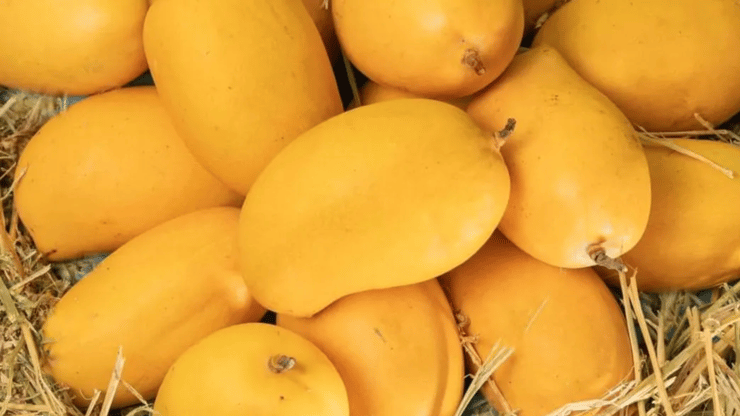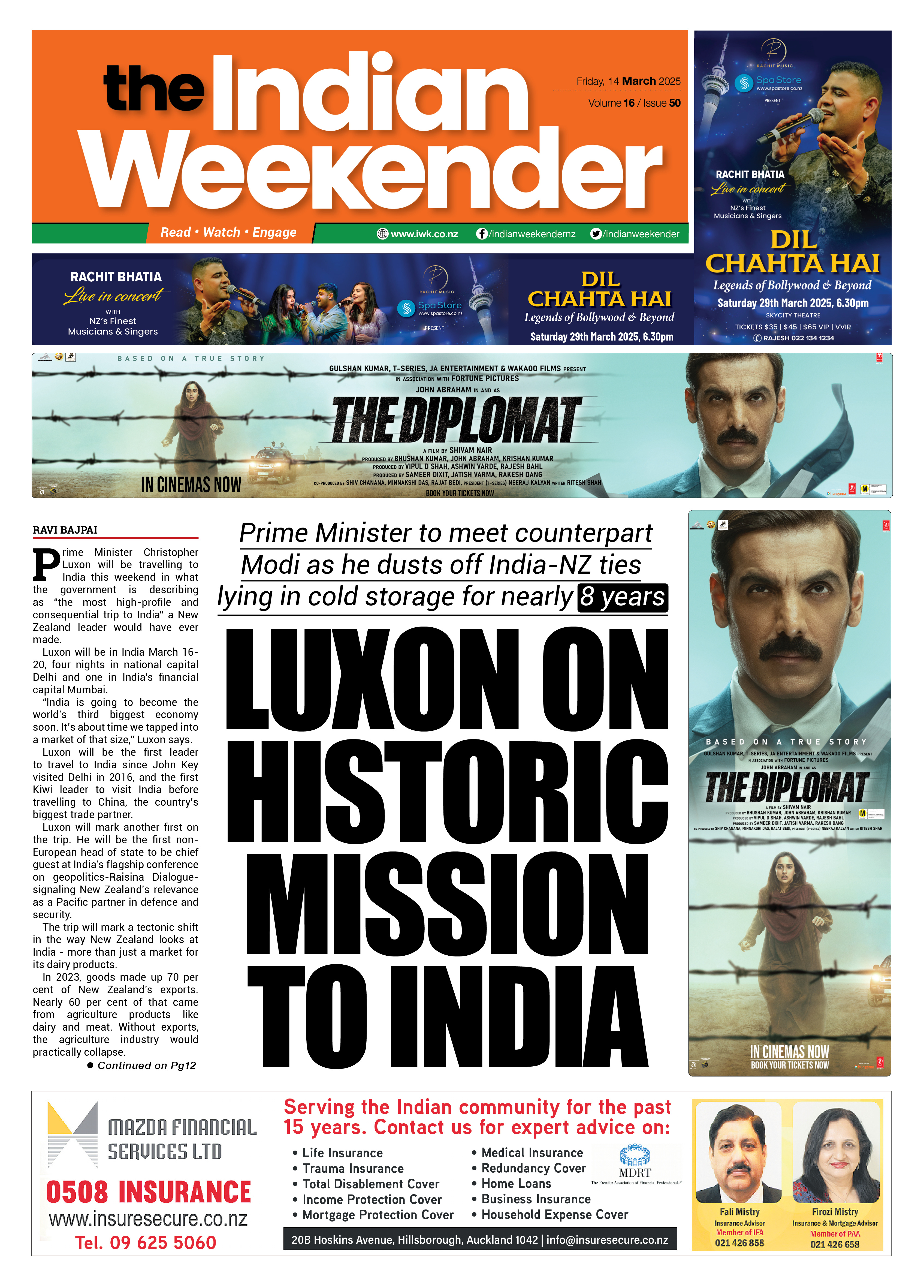NZ's Growing Craving For Indian Mangoes

As the mango season in India nears its end, Indian retailers in New Zealand have reported a surge in imports - both in terms of quantity as well as variety.
Mango season in India usually starts in April and ends around the middle of July after the monsoon rain begins.
While trade figures for the entire season are not yet available from the Ministry of Primary Industries, Hitesh Sharma, owner of Christchurch-based Indian retail shop Maia Foods, says his sales have increased threefold this season.
"Last year, we sold anything between 10 to 20 cartons of mangoes every week," Sharma says. "This year we are easily crossing about 60 cartons weekly."

Hitesh Sharma, owner of Christchurch-based Indian retail shop Maia Foods Photo: Supplied
A carton can be either three or four kilograms, with the number of mangoes varying between eight and 12, depending on the variety.
The retail price in New Zealand varies between $50 and $85 per carton, with variety as well as the timing of the season being the determining factors.
Prasad Salaskar of Salient Enterprises, a company engaged in the importation of mangoes from India, says prices change over the course of a season.
"Pricing will be a bit premium as the season starts in April," he says. "It will then be middling in May and June. There will be another surge in July as the season ends with customers wanting to have a taste one last time before the supply dries out."
Salaskar says the market is very different now compared to 2015 when he started.
"It was almost a decade back when we used to import about 100 boxes in two weeks," he says. "Now we are doing just under 1,800 boxes in a fortnight."
Another Auckland-based importer, Niraml Pandey, who owns Mango Bite, has also observed an uptick in impors this year.
"Even if compare this year with the last, I would say the demand has increased almost two times," Pandey says. "In 2023, we imported about 18 tonnes of mangoes to New Zealand. With our last shipments due to arrive soon, we are about to double that this year."
A welcome change has been the increase in varieties of mangoes being imported from India.
"While Kesar remains the most popular variety, [making up] 80 percent of our imports, others such as Langra, Dasheri, Chausa, Neelam, Malda and Banganpalli are slowly making their presence felt in the New Zealand market," Salaskar says.
By comparison, the Kesar variety made up almost 90 percent of Salaskar's imports in 2023.
"The market here is warming up to other varieties, with Kesar's proportion going down every year," he says.
Other varieties seen in the Indian supermarkets in Auckland include Totapuri, Rajapuri, Sinduri and the premium variety Alphonso.
"Alphonso is a premium product, which retails at around $60 per box, with a box containing six mangoes," Salaskar says.
Customers in New Zealand have the option of choosing from more than 15 different varieties of Indian mangoes at present, which is unprecedented, Pandey says.
"This year, we have also brought in a new variety - green mangoes, which are used in making pickles."
Retailers and importers are seeing a shift in demographics in terms of buying Indian mangoes.
"[Previously] it was only Indians who were interested in our mangoes," Pandey says. "But now, increasingly we are seeing other Asians, including Filipinos and Vietnamese, scouting Indian supermarkets for good quality mangoes."
While mango import figures from India have increased over the years, most mangoes imported to New Zealand continue to come from Latin America - a volume that exceeds 60 percent.
"This is mainly because they look bigger in size, which is what the average New Zealander is used to seeing traditionally," Salaskar says.
"For this [awareness about Indian mangoes] to change, Indian mangoes need to be sold in major supermarkets across the country," Pandey says. "This year, we supplied our mangoes to all the seven outlets of Farro Fresh in Auckland, and more such tie-ups are in the pipeline."
Salaskar also remains hopeful.
"Some companies have run promotional campaigns on Indian mangoes in the past, so they know the product," he says. "Now that we have two operational [fumigation] facilities to treat mangoes in India, I am sure customers will see an increased presence of Indian mangoes all over New Zealand from next year."
He was referring to the Maharashtra Agricultural Marketing Board vapour heat treatment facility in Mumbai and the Andhra Pradesh Agro Food facility in Tirupati near Chennai, which are the two licensed entities for treating mangoes that are exported to New Zealand.

Photo: Facebook / Mango Bite
A MPI spokesperson spoke of the importance of such facilities last year.
"Mangoes imported into New Zealand must meet the requirements in the Import Health Standard and as specified in the bilateral agreement between the two countries," the spokesperson said. "These are then inspected on arrival here to check for compliance requirements."
As a perishable product, logistics plays a very important role in making sure New Zealand customers get the best quality Indian mangoes upon arrival.
"Almost 20 percent of the product goes to waste every year," Pandey says. "But we make sure, from the day a mango is cut from the tree, it should reach the customers, within a week."
Salaskar agrees that timing is everything.
"From the time of dispatch in India to retail shops in Auckland, it takes about 48 hours," he says.
Sharma says that it typically takes an additional two days to reach Christchurch.
In essence, imported mangoes arrive in Auckland and, from there, are distributed to retailers in major urban centres such as Wellington, Tauranga, Rotorua and Palmerston North, among others.
Notably, the shelf life of mangoes is another reason Indian retailers are looking to diversify the available varieties here.
"Alphonso has the least shelf life - about two days," Salaskar says. "Then comes Kesar and Banganpalli with just under a week. But the others such as Langra, Dasheri and Chausa can last up to 10 days."
What next? Pandey has set his sights on a lofty long-term goal.
"We want India to replace Latin America as the largest exporter of mangoes to New Zealand," he says. "It might take a few years, but it will happen."





